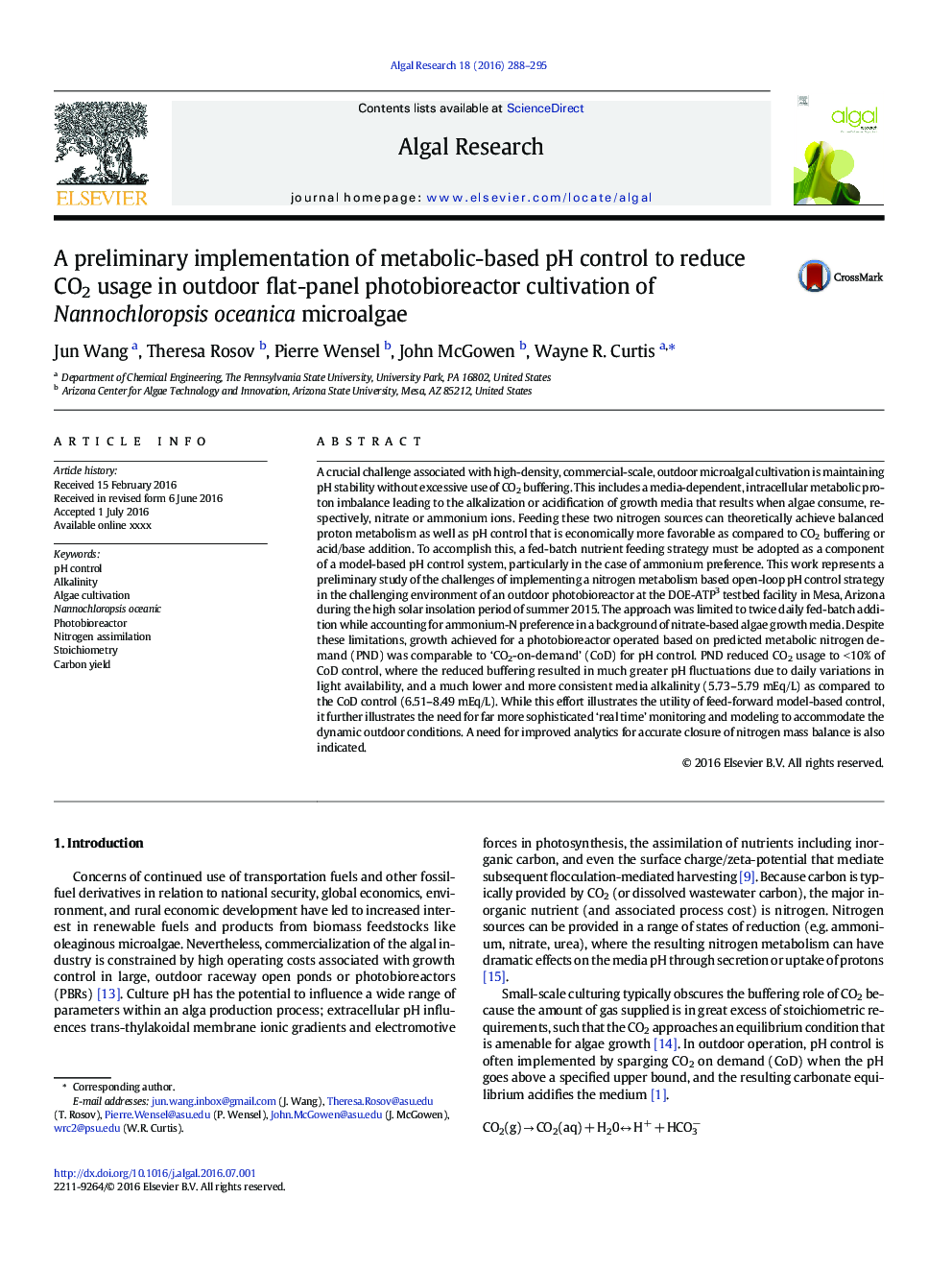| Article ID | Journal | Published Year | Pages | File Type |
|---|---|---|---|---|
| 8086688 | Algal Research | 2016 | 8 Pages |
Abstract
A crucial challenge associated with high-density, commercial-scale, outdoor microalgal cultivation is maintaining pH stability without excessive use of CO2 buffering. This includes a media-dependent, intracellular metabolic proton imbalance leading to the alkalization or acidification of growth media that results when algae consume, respectively, nitrate or ammonium ions. Feeding these two nitrogen sources can theoretically achieve balanced proton metabolism as well as pH control that is economically more favorable as compared to CO2 buffering or acid/base addition. To accomplish this, a fed-batch nutrient feeding strategy must be adopted as a component of a model-based pH control system, particularly in the case of ammonium preference. This work represents a preliminary study of the challenges of implementing a nitrogen metabolism based open-loop pH control strategy in the challenging environment of an outdoor photobioreactor at the DOE-ATP3 testbed facility in Mesa, Arizona during the high solar insolation period of summer 2015. The approach was limited to twice daily fed-batch addition while accounting for ammonium-N preference in a background of nitrate-based algae growth media. Despite these limitations, growth achieved for a photobioreactor operated based on predicted metabolic nitrogen demand (PND) was comparable to 'CO2-on-demand' (CoD) for pH control. PND reduced CO2 usage to <Â 10% of CoD control, where the reduced buffering resulted in much greater pH fluctuations due to daily variations in light availability, and a much lower and more consistent media alkalinity (5.73-5.79Â mEq/L) as compared to the CoD control (6.51-8.49Â mEq/L). While this effort illustrates the utility of feed-forward model-based control, it further illustrates the need for far more sophisticated 'real time' monitoring and modeling to accommodate the dynamic outdoor conditions. A need for improved analytics for accurate closure of nitrogen mass balance is also indicated.
Keywords
Related Topics
Physical Sciences and Engineering
Energy
Renewable Energy, Sustainability and the Environment
Authors
Jun Wang, Theresa Rosov, Pierre Wensel, John McGowen, Wayne R. Curtis,
